If there is one thing that is certain in this life, it is that we will all feel pain at some point, whether it be emotional, mental, or physical, it is inevitable. Many of us have ways to manage pain, but what if there was a way that you haven’t thought of yet? Meditation is becoming more popular in the modern era, but is still viewed by most as a new age pseudoscience that is more placebo than medicine. Is meditation an effective means of pain relief? CRPM offers consultations on pain management in Orange County, and can help you relieve physical pain that you are feeling.
What is Mediation?
When many people think of meditation, they think of incense burning, strange music, and sitting in awkward positions. This is a common misconception, and although some of these things are sometimes accompanied with meditation, it actually has more to do with your thoughts and your focus. Meditation can be done in any environment where you are free from distraction and can focus, so your gym shorts in your garage would be fine if that is what works for you. Typically, meditation involves being hyper aware and sensitive to different parts of your body, and in this case, the pain that you are feeling. You use what is called your “mind’s eye” to focus on a specific area, and let go of the power struggle you are having with it. A lot of the time, our minds are at war with our bodies, and this is what leads to frustration and depression; meditation is a good way to take a hold of that, and not become a slave to our suffering.
Can Meditation Reduce Pain?
According to an article from Psychology Today, meditation is actually a viable option for pain management. Their studies found that “mindfulness meditation” can reduce chronic pain by 57%, and those who are highly accomplished with meditation can reduce as much as 90%! This is accomplished by reworking the brain so that the meditation helps soothe the brain patterns that focus on pain, and help them to focus elsewhere so that pain is no longer on the forefront of your thoughts. The theory is to take the thought captive and focus your energy on areas that you can control. By shifting your focus away from the pain, you are no longer held captive by it. Many doctors now prescribe meditation as part of their recovery regiment, and if you have more questions about how this recovery process works, contact CRM to discuss how we can help you with pain management in Orange County.
Why Meditation Won’t Work for Everyone
Although these studies seem groundbreaking for the pain management industry, there are a few things you need to understand before you go off all your medications and quit your physical therapy. Meditation doesn’t necessarily fix the pain your body is feeling, but fixes your reactions and responses to the pain. Pain medication and therapy do very specific things to the body to fix the body itself, meditation merely allows you to put everything into perspective and not let the emotional pain you feel intensify the physical pain you are experiencing.
Ultimately, pain is categorized into two areas: primary and secondary. Primary pain stems from the actual injury, and is linked to the damage in your nervous system. Secondary pain is the reaction that your mind projects towards the primary pain, and can sometimes be much worse and longer lasting than the primary pain. The way we react to situations defines how we are going to feel, which is why on the surface secondary pain doesn’t seem like the most dangerous pain, it really is. Meditation is great to help reduce the secondary pain, and make your path to ultimate recovery that much easier, but meditation cannot fix the underlying problem that is the damage to your body. CRPM is unlike many other pain centers that offer pain management in Orange County because we treat the pain as the primary problem and not a symptom. Contact us today to see how we can help you get to the physical root of your pain, and with the assistance of meditation, put you on the correct path to recovery.


